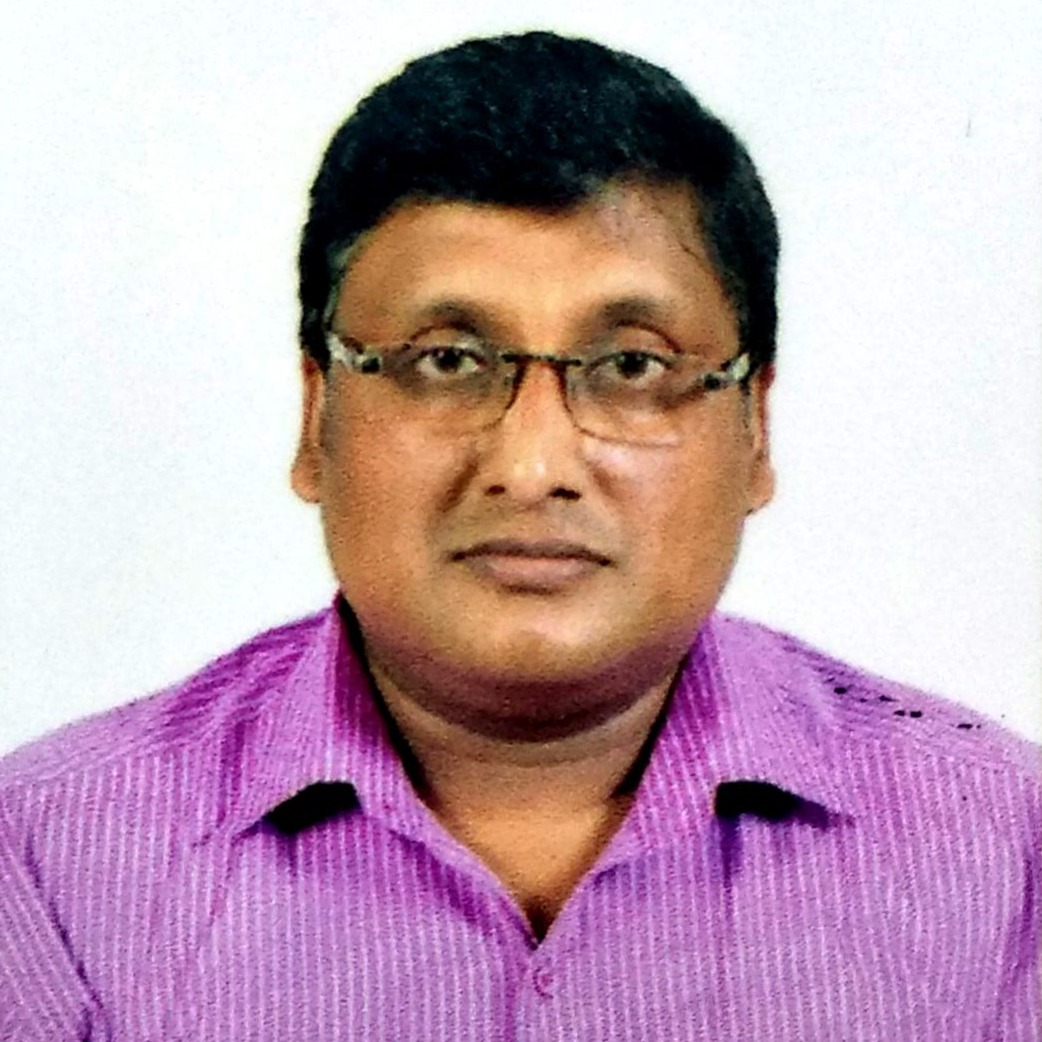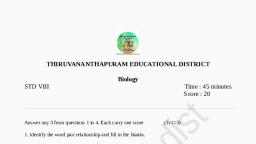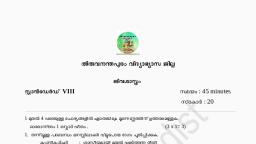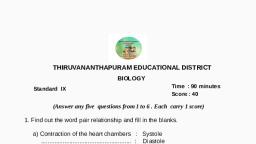Question 1 :
For the alleles $A,B,C,D$ where, $A=B>C=D$ the number of phenotypes obtained will be
Question 2 :
An offspring of two homozygous parents differing from one another by alleles at only one gene locus is
Question 3 :
A cross done between a homozygous recessive and a heterozygous plant is called as<br/>
Question 4 :
The Punnett square below shows a cross between a pure tall and heterozygous tall plant. What is the total number of tall offspring represented in the Punnett square?<br/>T- tall plant<br/>t- short plant<br/><table class="wysiwyg-table"><tbody><tr><td></td><td>T</td><td>T</td></tr><tr><td>T</td><td>TT</td><td>TT</td></tr><tr><td>t</td><td>Tt</td><td>Tt</td></tr></tbody></table>
Question 5 :
If a cross is made between two individuals, each having genotype Bb, two offsprings are obtained. Out of these first has dominant trait. What is the probability that the second offspring will exhibit recessive trait?
Question 7 :
F$_1$ generation of a cross between a red flowered plant and a white flowered plant predominantly consisted of red flowered plants indicating red flower trait is
Question 9 :
In the monohybrid cross Tt x tt, the phenotypic ratio of the progeny would be 
Question 12 :
The production of offsprings by sexual or asexual process is called as
Question 13 :
The motile reproductive structures of algae and fungi, which directly give rise to new individuals are called<br>
Question 18 :
Which of the following parts of the flowering plants is haploid?<br/>1) Ovary 2) Pollen 3) Egg 4) Anther 5) Zygote
Question 20 :
Which one of the following is used in the production of citric acid?
Question 22 :
Organisms that cannot be seen by naked eyes is called as
Question 29 :
Which of the following symptom shows that a person has malaria?
Question 32 :
The ability of individuals to adapt to changes in the environment can be considered as
Question 34 :
Which of the following processes involves transferring and combination of desirable characteristic features into plants and multiply them ?
Question 36 :
"Introduction of a normal functional gene into cells, in order to replace defective or mutated gene'." is known as 
Question 39 :
A correction or alleviation of a genetic disorder by the introduction of a normal gene copy into an affected individual is called as
Question 43 :
Which of the following techniques use radioactive precursors for observing metabolic activities of macromolecules?
Question 44 :
In an experiment the gene of bioluminescence from firefly has been successfully transferred into a plant as a result of which it started to glow. In the terminology of the molecular genetics, the plant is called ___________.<br/>
Question 45 :
Which of the following biomolecules can be analysed by ELISA test?
Question 46 :
X technique is now routinely used to detect HIV in suspected AIDs patients. It is being used to detect mutations in genes in suspected cancer patients too. It is a powerful technique to identify many other genetic disorders. Identify X-
Question 48 :
After removal of signal peptide, the secretory protein involved in formation of insulin is known as
Question 50 :
Which of the following includes all living organisms and all life-supporting regions of the Earth?
Question 54 :
Which of the following does not have aeffect onthe forest ecosystem?<br>
Question 63 :
Which one of the following is the complementary sequence for the DNA with $5'$-CGTACTA-$3'$.
Question 68 :
According to Watson-Crick model, hydrogen bonding in a double-stranded DNA occurs between.
Question 69 :
Which of the following is the co-factor for origin of life from pre-RNA?
Question 71 :
Whichof the following biologists has been dubbed as the architect of molecular biology?
Question 73 :
Choose the correct answer from the alternatives given :<br>Ifthe sequence of nitrogen bases of the coding strand of DNA in a transcriptionunit is: 5 - A T G A AT G - 3, the sequence of bases in its RNA transcriptwould be
Question 74 :
The two strands of double helix of DNA are linked together by hydrogen bonds between
Question 75 :
The number of purines in a segment of DNA molecule is 68. What will be the number of pyrimdines in this segment ?
Question 76 :
What is the length of human DNA containing $6.6\times10^9$ bp nitrogen bases?
Question 77 :
In  a dsDNA number of phosphodiester bonds are $3250$, then find the number of base pairs.
Question 78 :
Which one of the following combinations is found in DNA ?
Question 85 :
Species going to be extinct due to low reproductive rate is<br/>
Question 89 :
Number of plant species estimated to be present in India is<br>
Question 90 :
India is one of the twelve megadiversity countries with ______ of genetic resources of the world.<br/>







































